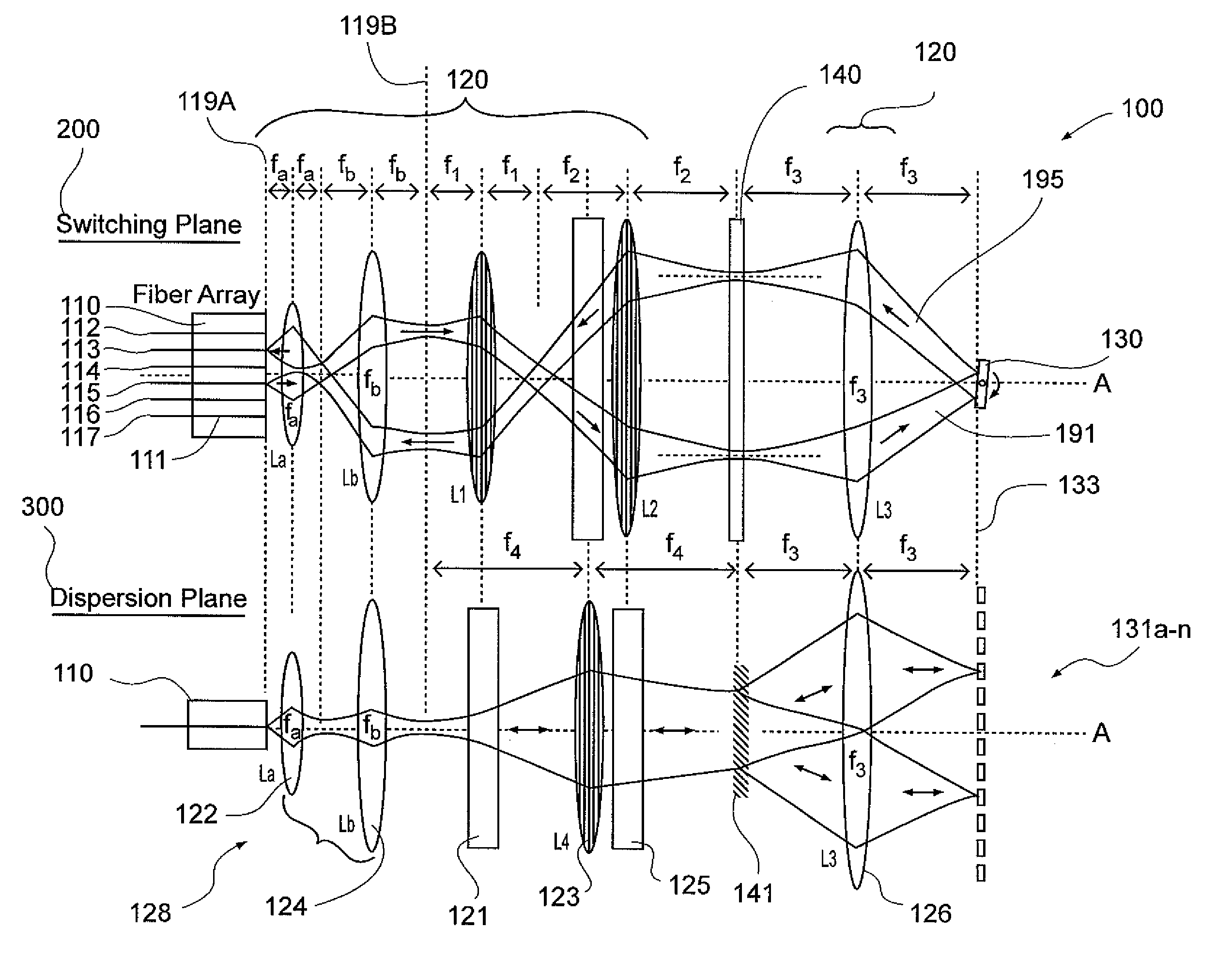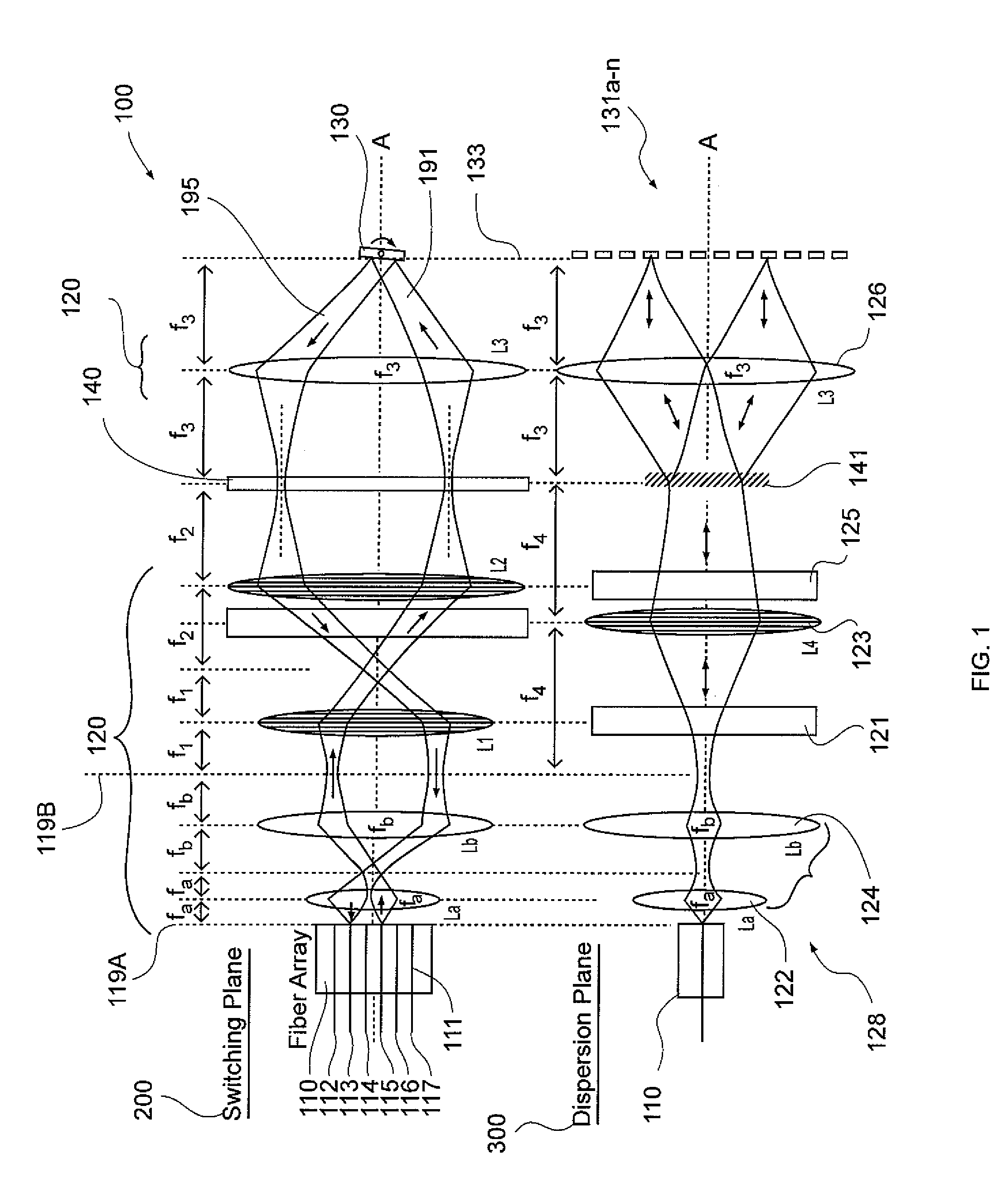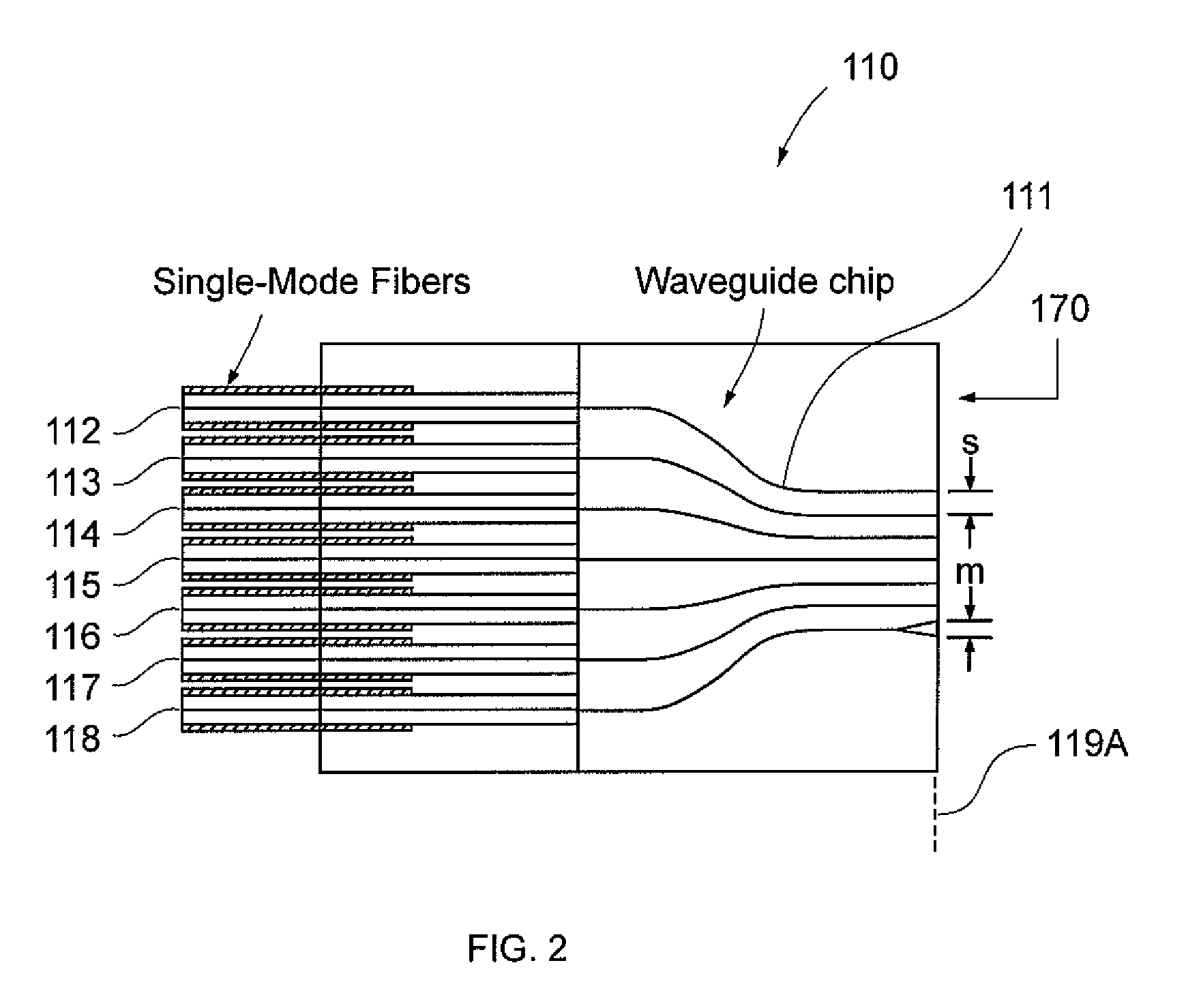Wavelength selective switch with reduced chromatic dispersion and polarization-dependent loss
a selective switch and chromatic dispersion technology, applied in the field of optical communication, can solve the problems of reducing affecting the performance of individual components, and the risk of excessive distortion of optical signals, so as to reduce the chromatic dispersion and/or low polarization-dependent loss, increase the fiber port capacity and optical performance of the wss, and reduce the performance requirements of individual components
- Summary
- Abstract
- Description
- Claims
- Application Information
AI Technical Summary
Benefits of technology
Problems solved by technology
Method used
Image
Examples
Embodiment Construction
[0066]In describing the preferred embodiments of the present invention, as illustrated in the drawings, specific terminology is employed for the sake of clarity. The invention, however, is not intended to be limited to the specific terminology so selected, and it is to be understood that each specific element includes all technical equivalents that operate in a similar manner to accomplish a similar purpose.
[0067]For example, although the figures and description refer to single-element lenses, it should be understood that each such lens may be replaced by a plurality of elements, including one or more non-planar mirror(s), whereby the same function may be achieved. Such a plurality of elements may additionally offer enhanced performance characteristics. Moreover, such lens may be obtained by various techniques including but not limited to a single glass material, two or more glass materials in a compound fashion, a curved reflective surface, a diffractive surface, a holographic surf...
PUM
 Login to View More
Login to View More Abstract
Description
Claims
Application Information
 Login to View More
Login to View More - R&D
- Intellectual Property
- Life Sciences
- Materials
- Tech Scout
- Unparalleled Data Quality
- Higher Quality Content
- 60% Fewer Hallucinations
Browse by: Latest US Patents, China's latest patents, Technical Efficacy Thesaurus, Application Domain, Technology Topic, Popular Technical Reports.
© 2025 PatSnap. All rights reserved.Legal|Privacy policy|Modern Slavery Act Transparency Statement|Sitemap|About US| Contact US: help@patsnap.com



